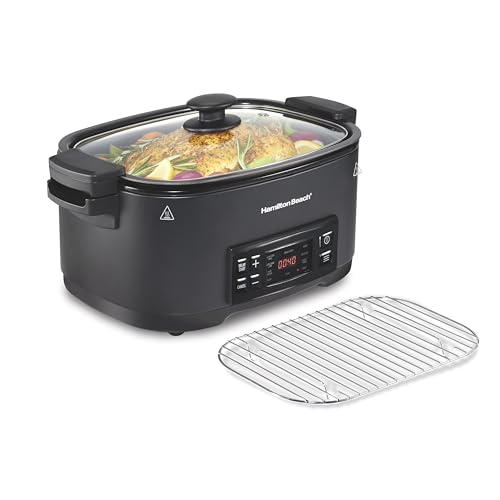



Salami sandwich is a popular choice for a quick and delicious meal. Whether you’re preparing it at home or getting one from a local deli, you might wonder if it needs to be refrigerated to stay fresh and safe to eat.
The answer to this question depends on several factors, such as the type of salami you’re using and the ingredients in your sandwich. In general, salami is a cured meat that can be stored at room temperature for extended periods.
However, it’s important to note that once you’ve assembled the sandwich, it’s best to keep it refrigerated to maintain its quality and prevent the growth of bacteria. This is especially true if your salami sandwich contains mayonnaise, cheese, or other perishable ingredients.
Refrigerating your salami sandwich will help to keep it fresh and safe to eat for a longer period. It’s recommended to consume the sandwich within 2-3 days if stored in the refrigerator.
So, while salami itself doesn’t necessarily need refrigeration, refrigerating your salami sandwich is advisable to ensure its freshness and prevent the risk of foodborne illnesses. Enjoy your delicious salami sandwich knowing that it’s stored properly!
The Importance of Proper Storage
Proper storage is essential when it comes to preserving the quality and safety of your salami sandwich. Storing it correctly will help prevent spoilage and the growth of harmful bacteria.
Temperature Control
Temperature control is one of the key factors in ensuring the freshness of your salami sandwich. It is recommended to store it in a refrigerator at a temperature of 40°F (4°C) or below. This helps slow down the growth of bacteria and keeps the sandwich safe to eat for a longer period.
Avoiding Contamination
Contamination can occur when your salami sandwich comes into contact with other foods that may contain harmful bacteria. It is essential to store your sandwich separately from raw meats and other perishable items to prevent cross-contamination.
Additionally, make sure to keep your salami sandwich in a sealed container or wrapped tightly in plastic wrap or aluminum foil. This helps keep out any potential contaminants and extends the shelf life of your sandwich.
Note: If you plan to take your salami sandwich with you for an extended period, consider using a cooler bag with ice packs or freezing it beforehand. This will help maintain a safe temperature and prevent any spoilage during transportation.
In conclusion, proper storage of your salami sandwich is crucial for maintaining its freshness and safety. By following the recommended temperature guidelines and taking precautions to avoid contamination, you can enjoy your sandwich without worry.
Understanding the Shelf Life of Salami
Salami is a type of cured sausage made from fermented and air-dried meat. It is commonly eaten as part of a sandwich, added to pizzas, or enjoyed as a snack. Understanding the shelf life of salami is important to ensure its safety and quality.
Salami has a relatively long shelf life due to the curing process it undergoes. The salt and spices used in the curing process help to preserve the meat and inhibit the growth of bacteria. As a result, salami can typically last for several weeks, or even months, when stored properly.
Proper storage is key to maintaining the quality and safety of salami. It is best to store salami in a cool, dry place, such as a pantry or cellar. If the salami is unopened, it can be kept at room temperature. However, once the packaging is opened, it is recommended to refrigerate the salami to prevent bacterial growth.
When refrigerated, salami can last for up to several weeks. It is important to keep the salami well-sealed to prevent it from drying out or absorbing any unwanted odors from the refrigerator. Wrapping it in plastic wrap or storing it in an airtight container can help maintain its freshness.
While salami can be enjoyed past its expiration date, it is important to use your senses to determine if it is still safe to eat. If the salami has developed an unpleasant smell, slimy texture, or visible mold, it is best to discard it as these are signs of spoilage.
In conclusion, salami has a long shelf life due to its curing process. Proper storage in a cool, dry place is necessary to maintain its quality and safety. Refrigerating opened salami is recommended to prevent bacterial growth. Trust your senses to determine if the salami is still safe to eat.
Safe Handling of Salami
When it comes to enjoying a salami sandwich, it is important to handle the salami properly to ensure food safety. Here are a few tips for properly handling salami:
Choose quality salami: It’s always a good idea to choose high-quality salami from a reputable source. Look for salami that is fresh and has been properly cured.
Check the expiration date: Before using salami, always check the expiration date. Expired salami should not be consumed as it may pose a risk to your health. If the salami smells off or has an unusual texture, it’s best to discard it.
Keep it refrigerated: Salami should be stored in the refrigerator. Once opened, it should be tightly wrapped in plastic wrap or placed in a resealable bag to prevent it from drying out. It is important to maintain a temperature below 40°F (4°C) to inhibit bacterial growth.
Separate from other foods: To avoid cross-contamination, store salami separately from other foods. Bacteria from other foods can transfer to the salami and cause foodborne illnesses. Use separate containers or place the salami in a sealed plastic bag.
Properly clean and sanitize utensils: When slicing salami, use clean utensils and cutting boards to prevent the spread of bacteria. After use, wash the utensils with hot soapy water and sanitize them to ensure proper cleanliness.
Use within a reasonable time: Salami, like any perishable food, should be consumed within a reasonable time frame. Once opened, it is recommended to consume it within 3-5 days. Check the packaging or consult the manufacturer’s instructions for specific guidelines.
By following these guidelines, you can safely enjoy a delicious salami sandwich knowing that you have taken the necessary steps to handle the salami properly.
The Role of Temperature in Preservation
Temperature plays a crucial role in the preservation of food, including the salami sandwich. Proper temperature management is essential to prevent the growth of harmful bacteria and ensure food safety.
The Importance of Refrigeration
Refrigeration is a widely used method of preserving food, as it helps to slow down bacterial growth. By keeping food at temperatures below 40°F (4°C), the growth of bacteria and other microorganisms is significantly inhibited. This is especially important for perishable items like meat, including salami.
Refrigeration helps to extend the shelf life of the salami sandwich by inhibiting the growth of bacteria. Bacteria multiply rapidly in the temperature danger zone, which is between 40°F and 140°F (4°C and 60°C). By refrigerating the salami sandwich, you can effectively prevent bacterial growth and maintain its quality for a longer period.
Alternatives to Refrigeration
In some cases, refrigeration may not be readily available, such as during outdoor activities or picnics. In such situations, alternative methods can be used to keep the salami sandwich safe for consumption.
- Using insulated lunch bags or coolers with ice packs can help maintain a lower temperature and slow down bacterial growth.
- Consuming the salami sandwich within a few hours of preparation can reduce the risk of bacterial contamination.
- If refrigeration is not possible, it is important to keep the salami sandwich in a cool, shaded area away from direct sunlight and heat sources.
However, it is crucial to note that these alternative methods only provide temporary preservation and should not be relied upon for extended periods. Refrigeration remains the safest and most effective method of preserving the salami sandwich and ensuring food safety.
By understanding the role of temperature in preservation and practicing proper food storage techniques, you can enjoy a safe and delicious salami sandwich with peace of mind.
Alternative Ways to Store Salami
If you don’t have access to a refrigerator or if you’re looking for alternative ways to store salami, here are a few options to consider:
1. Pantry Storage
You can store salami in a cool and dry pantry. Make sure to wrap it tightly in plastic wrap or place it in an airtight container to prevent any moisture from affecting its quality. Remember to consume it within a few days to ensure freshness.
2. Vacuum Sealing
If you have a vacuum sealer at home, you can use it to store salami for an extended period. Vacuum sealing helps remove air and can help prolong the shelf life of the salami. Just make sure to follow the manufacturer’s instructions for proper sealing.
It’s important to note that while these alternatives can be used under certain circumstances, storing salami in a refrigerator remains the best option to maintain its quality and prevent any potential foodborne illnesses. These alternative methods should be used as temporary solutions when necessary.
Always check the quality and smell of salami before consuming, especially if it has been stored using alternative methods.
Factors That Affect Salami’s Shelf Life
1. Moisture Content:
Salami with higher moisture content has a shorter shelf life compared to drier varieties. The presence of excess moisture can lead to the growth of mold and bacteria, accelerating spoilage. Proper packaging and storage can help control moisture levels.
2. Temperature:
The temperature at which salami is stored greatly impacts its shelf life. Ideally, salami should be kept in a cool, dry place. Exposure to high temperatures can cause the fat in the salami to become rancid, resulting in off flavors and a shorter shelf life.
3. Packaging:
The packaging of salami plays a crucial role in its shelf life. Vacuum-sealed packaging helps prevent contact with air and slows down the growth of bacteria and mold. It also helps maintain the freshness and flavor of the salami over an extended period.
4. Exposure to Light:
Salami should be stored in a dark place or wrapped in opaque materials to minimize exposure to light. Light can cause oxidation of the fats in salami, leading to spoilage and a shorter shelf life.
5. Contamination:
The presence of contaminants, such as other perishable foods or unclean surfaces, can introduce harmful bacteria to the salami, resulting in spoilage. It is important to store salami separately from other foods and ensure proper hygiene practices during preparation and handling.
6. Quality of Ingredients:
The quality of ingredients used in making salami can affect its shelf life. Fresh and high-quality meat, spices, and curing agents can contribute to a longer shelf life, while poor-quality ingredients may result in quicker deterioration.
By understanding these factors and following proper storage practices, you can extend the shelf life of your salami and enjoy it for a longer period.
FAQ
Does salami sandwich need to be refrigerated?
Yes, it is recommended to refrigerate a salami sandwich to prevent the growth of bacteria on the meat.
Can I keep a salami sandwich at room temperature?
It is not recommended to keep a salami sandwich at room temperature for an extended period of time, as it can lead to the growth of harmful bacteria. It is best to refrigerate the sandwich to ensure food safety.
How long can a salami sandwich be left unrefrigerated?
A salami sandwich should not be left unrefrigerated for more than 2 hours. After that time, the risk of bacterial growth increases. It is always best to refrigerate the sandwich as soon as possible to maintain food safety.
What happens if I don’t refrigerate my salami sandwich?
If you don’t refrigerate your salami sandwich, the warmth and humidity can create an ideal breeding ground for bacteria. This can potentially lead to foodborne illnesses and spoilage of the sandwich. It is important to refrigerate perishable foods like salami sandwiches to ensure food safety.











